New Testament Religious Figures Confirmed
038
039
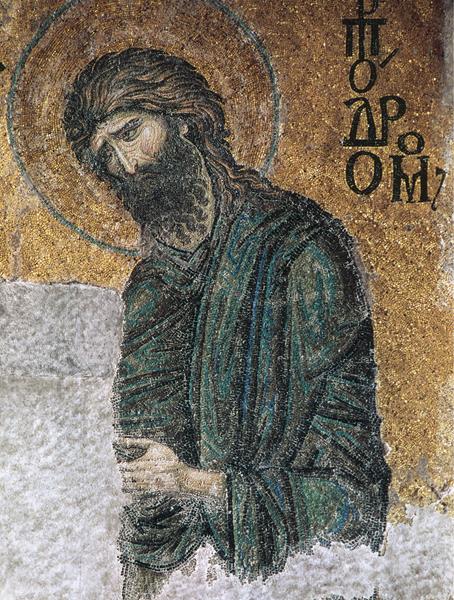
Are any religious figures in the New Testament—in addition to Jesus—mentioned outside of it, in non-Christian writings of their times?
This article completes the coverage of people in the New Testament who are documented outside of the New Testament and other Christian sources. Since 2014, four BAR articles have presented the evidence from archaeology and ancient texts for the historical existence of 53 real people in the Hebrew Bible and, in the New Testament, Jesus plus 23 political figures.a As with the earlier BAR articles, the goal is to look at sources outside of the Bible—and, especially for this article, outside of other Christian writings, as well—to find out whether other contemporaneous sources mention any of its religious figures.
These figures are unlike most of the political figures of the 040New Testament previously listed in BAR as archaeologically confirmed. Political figures had strong self-interest in setting up imposing stone monuments and minting coins to make their own rule, wealth, power, and glory seem permanent and invincible, usually as guaranteed by the Roman emperor. Religious figures, in contrast, evidently did not need to erect monuments for their own self-glorification or mint coins to display their wealth. Perhaps that is why there is less ancient physical evidence for them.
Still, we have non-Christian evidence for at least seven religious figures of the New Testament: Jesus of Nazareth, whose mention in non-Christian sources has already been discussed in BAR, and at least six more, who appear in the Jewish historian Flavius Josephus’s Jewish Antiquities, in his The Jewish War, in his autobiographical The Life of Josephus, or in the earliest part of the Talmud, the Mishnah.b In fact, all of the figures in the New Testament who have been documented outside of it were either political or religious figures (and some high priests also had limited political power, arguably making them both political and religious figures).
To make a firm identification, one must interpret ancient writings outside the Bible by other such writings, not the Bible, and then make sure that: (1) sources are genuine, not forged or unreliable; (2) the time-and-place setting of the person in the ancient writing matches the setting of the person in the Bible; and (3) marks of an individual, such as name, father’s name, title, or work location, distinguish two different people from each other and avoid the impression they are one and the same.
We’ll begin with the grandson of the great Jewish leader Hillel the Elder: Gamaliel the Elder, who makes a truly dramatic New Testament appearance in Acts 5:33-40. At that point in time, around 30 (or possibly 33) C.E., Jesus had already been crucified and, according to his followers, resurrected and ascended. After the Festival of Firstfruits, or Weeks (also called Pentecost), Peter had preached in Jerusalem, and large numbers of Jews had believed in Jesus. This result had aroused the opposition of priests and Sadducees, groups with whom Jesus had earlier come into conflict. They made Peter and John appear before the whole Jerusalem Sanhedrin, the full assembly of the elders of Israel. There they ordered these two not to proclaim or teach their message, but Peter and the other apostles repeatedly disobeyed the high priest’s orders. (The apostles were Jewish followers of Jesus, normally 12 in number, chosen and sent to spread his message.) Even when put in jail, the apostles escaped and resumed teaching in the Temple.
Incensed, the high priest had them re-arrested, brought them again before the Sanhedrin, and called them to account for their disobedience. Peter replied by claiming divine authorization and once again preaching the same message, this time directly to their faces! The Sanhedrin was furious and wanted to have the apostles executed. The vulnerable Jesus movement, having barely begun, was about to lose all of its remaining, designated leaders and potentially fall into disarray and confusion. At this crucial moment, Gamaliel the Elder rose to address the enraged assembly.
It is not hard to imagine the din of angry comments becoming quiet when he stood up. Gamaliel was not one of the Sadducees, allied with the priesthood. He was, rather, a Pharisee and a very learned rabbi, without doubt the most prestigious of his group, from a distinguished line of famous rabbis of the Pharisees, most notably his grandfather, the great Hillel. Gamaliel the Elder was eventually to became the first of only seven ancient scholars of Jewish law who had the distinction of being called Rabban, a title that bestows even greater honor than Rabbi. Jewish tradition holds that during a certain period, Gamaliel presided over the Sanhedrin in Jerusalem, but precisely when that occurred is unclear. He flourished for a long time, during the period approximately 20–50 C.E., in Jerusalem.
Even if the events of Acts 5 occurred before he became head of the Sanhedrin, Gamaliel was certainly one of its most prominent leaders. He is documented in several tractates of the Mishnah, and likewise by the Jewish historian Josephus.1
041
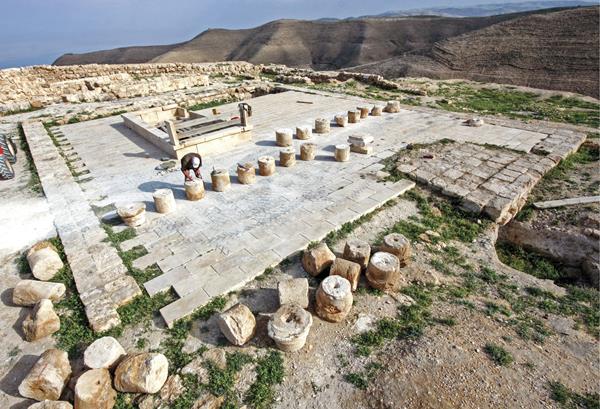
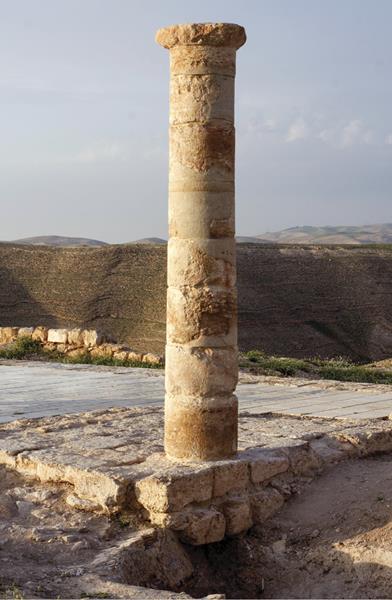
042
These facts about Gamaliel correspond perfectly with Acts 5:34: “But a Pharisee named Gamaliel, a teacher of the law, who was honored by all the people, stood up in the Sanhedrin” (NIV). As a result, Gamaliel the Elder in the Mishnah and in The Life of Josephus is certainly the one to whom the narrative in Acts 5 refers.
Presumably as the room became quiet, according to Acts 5, Gamaliel began by ordering that the apostles be removed from the room, to permit the Sanhedrin to deliberate privately, just as modern-day juries meet away from the accused, to decide on a verdict. Then, in measured tones, he addressed the Sanhedrin, “Men of Israel, consider carefully what you intend to do to these men.” He briefly described two revolts of their era whose leaders had been killed, and whose followers then scattered, so that their rebellions came to nothing. The parallel with the followers of Jesus was clear: The leader had been killed, and the followers might well disperse, bringing the movement to an end. Roman suppression might have been implicitly understood.
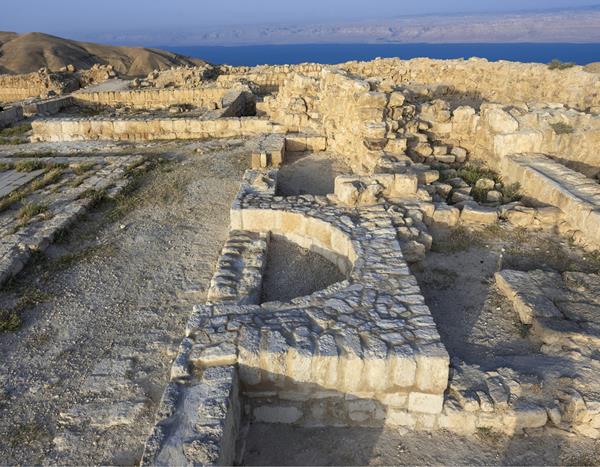
Then he said, “Therefore, in the present case I advise you: Leave these men alone! Let them go! For if their purpose or activity is of human origin, it will fail. But if it is from God, you will not be able to stop these men; you will only find yourselves fighting against God.” (This narration draws on and quotes the only extant, ancient account, Acts 5:12-40.)
His speech, which did not endorse the Jesus 043movement but advised caution, with the hope that Jesus’s followers would disperse, won over the Sanhedrin. They punished the apostles for disobedience with a flogging, “ordered them not to speak in the name of Jesus, and let them go.”
Gamaliel admirably represented the fine tradition of applied wisdom in the Judaism of his day, and he receives high honor in both early Christian and Jewish sources, including one of the foundational collections of Judaism, the Mishnah.
Although the Mishnah does not confirm the events in Acts 5, it clearly lends a sense of plausibility to Acts 5 in two ways. First, the Mishnah affirms Gamaliel the Elder’s association with the Jerusalem Sanhedrin and his stellar prestige as a rabbi, which put him in a position to do what Acts 5 says, confidently addressing the meeting with a dissenting view and succeeding in persuading the members.
Second, the Mishnah implicitly attributes to Gamaliel the moderate judicial temperament that would perhaps have led him to give the sort of advice that appears in Acts 5. It presents him as a prime advocate of the house of Hillel, which more frequently tended toward leniency in legal matters than the house of Shammai, though both had some strict views.
In 57 C.E., and according to Acts 22:1-3, the apostle Paul, introducing himself to a hostile crowd in Jerusalem, stood on the steps to the Temple and gave his best credentials as follows: “I am a Jew, born in Tarsus of Cilicia, but brought up in this city [that is, Jerusalem]. Under Gamaliel I was thoroughly trained in the law of our fathers and I was just as zealous for God as any of you are today” (Acts 22:3). Before this zealous Jewish audience, he emphasized his association with this teacher by beginning the description of his education with the phrase, literally, “at the feet of Gamaliel.” Thus Paul invoked the name of his eminent teacher in Jerusalem and described his thorough education in Jewish law in such a way that thoroughness suggested zeal. There is no doubt that he referred to the great law teacher Gamaliel who flourished in Jerusalem c. 20–50 C.E.

John the Baptist is also mentioned in a dramatic context, both in Josephus’s Jewish Antiquities and especially in the Gospels. Josephus reports that he was an innocent victim, executed by a ruler who feared he might lead a rebellion (Antiquities 18.118). John receives Josephus’s usual verbal honors reserved for exemplary Jewish religious leaders: one who preached virtue in righteous treatment of others and in piety toward God. Although Josephus, a non-Christian source, says nothing about any relation between John and Jesus, it is clear that Josephus’s Antiquities refers to the same John who is described in the Gospels.
Josephus’s references to John give him the unusual epithet “the Baptizer” or “the Baptist” (Antiquities 18.116) and place him in Roman Palestine until his death during the latter part of the rule of Herod Antipas, Tetrarch of Galilee and Perea (r. 4 B.C.E.–39 C.E.). In fact, John’s imprisonment and execution by Antipas is the most specific of several points of identification in common between Josephus and the Gospels (Antiquities 18.119; Matthew 14:10; Mark 6:17, Mark 6:27). Only Josephus provides two details: that the imprisonment was in the fortress called Machaerus (which has been excavated, just northeast of the Dead Seac) and that Salome was the name of the daughter of Herodias, Herod Antipas’s second wife, whom she had with her first husband. Only the Gospels point out that the method of execution was beheading.
The dramatic context in the Gospels (Matthew 14:3-12; Mark 6:17-29) differs from Josephus’s comparatively vague, general statement about the motive for the execution, in that they describe in detail how the execution came about. Herodias, the second wife of Herod Antipas, had deserted her husband, Herod Philip, who was not a ruler at all, to marry his half-brother Antipas, who ruled the whole of the provinces of Galilee and Perea. Because the brother she had married first was still alive, the second marriage violated Mosaic law (Leviticus 20:21), and John the Baptist had publicly denounced it. Herodias wanted to kill John, but she was unable. Antipas, hesitating to kill a righteous man, instead had thrown John into prison.
Antipas’s own birthday banquet provided Herodias with her opportunity to kill John. Her daughter Salome danced, much to the pleasure of Antipas and the many dignitaries who were his guests. With an oath, Antipas promised Salome whatever she wanted, up to half his kingdom. Coached by her mother, Herodias, the daughter requested the head of John the Baptist 044on a platter. Antipas did not want to kill John, but because of his oath and to save credibility as a ruler with his guests, he sent the executioner to the prison to behead John. When Salome received the head on a platter, she gave it to her mother—bringing the drama to a grisly end.
James (Jacob),d the brother2 of Jesus, also called James the Just, is the third person in the New Testament who can be identified in a non-Christian source. One must distinguish between this James and other men named James, especially the son of Zebedee and brother of John, who left his fishing nets beside the Sea of Galilee to follow Jesus and who was eventually executed by King Herod Agrippa I, probably in 44 C.E. (Acts 12:2). According to the Gospels, James the brother of Jesus did not believe in or follow Jesus at all during Jesus’s public ministry (John 7:5; Mark 3:31-34; Mark 6:1-6). Only later did he believe and become a leader in the earliest church, at Jerusalem.
This James is mentioned in Josephus’s Jewish Antiquities (20.200–201), which also mentions Jesus in a noncommittal way to identify James as “the brother of Jesus, who is called Christ.” His name, his relationship to that particular Jesus, and the fact that he was a church leader (Acts 15:13; Galatians 2:9) who lived in Jerusalem—until he was martyred there in 62 C.E., during the reign of Nero (54–68 C.E.)—are facts that all clearly point to one and the same person in Josephus’s Antiquities and the New Testament Book of Acts.
BAR readers will be familiar with the James Ossuary, which was first published in 2002.e The inscription on this ossuary (a burial box for bones) reads, “Jacob, son of Joseph, brother of 045Yeshua‘ (Jesus).” Although some might think this is clear archaeological evidence for the existence of James the Just, I have not included it here. Since the ossuary is unprovenanced, its authenticity—and the authenticity of its well-discussed inscription—has not been established, so it does not meet the first requirement for making an identification.

Next are three high priests. Whereas Josephus presents Jesus, John the Baptist, and James (Jacob) the brother of Jesus as incidental to other subjects that were more important to him, in sharp contrast, he mentions these three high priests purposefully. They appear in the context of all-important relations with Roman governors of Judea/Palestine. The priesthood attempted to mediate between the foreign governors and the populace, which was frequently enraged by certain governors’ provocations. The priesthood’s goal was to avoid Roman retaliation, which they feared would bring a catastrophe on the Jewish populace—as it ultimately did in 70 C.E.
The three high priests in the New Testament whom Josephus confirms are Annas, Caiaphas, and Ananias. Because there was only one high priest at a time, they are relatively easy to identify, usually by name and date, or by name and particular circumstances mentioned both in the New Testament and by Josephus.
According to Antiquities, our first high priest is called Ananus. This formal name is shortened to Annas in the Gospels, which tend to use the terms of common speech. He had the distinction of having five sons who succeeded him as high priest (sometimes interrupted by others), making him the founder of a dynasty of high priests (Antiquities 20.198).
046
Only two Jewish high priests had this name. Ananus the son of Seth (or Sethi) was high priest from 6 to 15 C.E. (Antiquities 18.26), and later on he continued to exert his influence through his sons. John 18:13 mentions that Caiaphas was his son-in-law, which explains his active role during Caiaphas’s high priesthood. The Gospels sometimes refer to Annas as high priest after he was removed from office, much as past U.S. presidents are sometimes called “Mr. President” after their term expires. Also, the Gospel of John refers to him by name in connection with the arrest and trial of Jesus, which occurred between approximately 29 and 33 C.E. (most studies say 30 C.E.).
The only other high priest who bore this name was the son of the founder of the high priestly dynasty, the impulsive Ananus son of Ananus, mentioned not in the New Testament but in the writings of Josephus (Antiquities 20.199–203), where he is connected with the martyrdom of James the brother of Jesus. He was appointed high priest in 62 C.E., decades after Jesus was crucified, so Ananus the Younger cannot be the high priest Annas mentioned in the Gospels.
There is also potential but inconclusive archaeological evidence for the same high priest Ananus (or Annas). His tomb may have been uncovered in the Akeldama field south of Jerusalem’s walls.f
Next we have the high priest Caiaphas. Although Josephus referred to him as “Joseph Caiaphas” and “Joseph, who was called Caiaphas” (Antiquities 18.35; 18.95), Caiaphas’s full name was actually Joseph, son of Caiaphas. The setting plus his name clearly identify the Caiaphas of the New Testament with the Caiaphas in Josephus’s writings.
The years of his appointment as high priest, 18–36/37 C.E., and the location of his high priesthood in the Temple at Jerusalem put him at the right time and place to be the Caiaphas whom the Gospels and Acts mention, along with Annas, in relation to the arrest and trial of Jesus. Taking another approach, the facts that he held the office of high priest (Antiquities 18.35), that there was only one official high priest at a time, and that there was only one Caiaphas among high priests of the Second Temple era leave no doubt that the Caiaphas mentioned in Josephus’s writings and the Caiaphas of the New Testament were one and the same.
Further, two archaeological finds might potentially identify the high priest Caiaphas, but neither one provides enough information to draw a firm conclusion. The first is a small family tomb, containing ossuaries, on the south side of old Jerusalem. An Aramaic inscription on one of the ossuaries contains at least one possible version of Caiaphas’s name: Yhwsf br Qyf’, “Joseph, son of Caiaphas,” but it seems more likely to be read as Yhwsf br Qwf’, “Joseph, son of Qopha.” On another ossuary in the same family tomb, the name Qf’ appears alone. Also, none of the inscriptions discovered in this tomb makes any explicit reference to the priestly status of anyone buried there (though they might still have been priests).
The second is an unprovenanced ossuary inscribed, “Mariam, daughter of Yeshua‘ bar Qayafa, priest of Ma‘aziah, from Bet ’Imri.” Although its origin is unknown and, therefore, it may potentially be a forgery or, if authentic, it might possibly have been altered in modern times, laboratory examination strongly suggests authenticity. In it, “Qayafa” is potentially an inherited nickname that functioned as a surname, as was common among Jewish families in Second Temple times, rather than the actual name of one of her male ancestors. Therefore, the data in the inscription is insufficient to arrive at a clear identification of that particular member of the Caiaphas family.
The final confirmed figure is the high priest Ananias son of Nebedaios. The years when he was most likely the high priest, as indicated by events in Josephus’s Antiquities, are at least 53–59 C.E. (Antiquities 20.103–179) but, as suggested by a precise chronology of Paul’s life, could be 47–59 C.E.3 Both agree that he was high priest in 57 C.E., when he presided over Paul’s trial. According to the New Testament, the setting of Ananias may reasonably be placed sometime around 53–59 C.E., and clearly in Jerusalem, because, as high priest, he oversaw the functions of Jerusalem’s Temple. So he was in Jerusalem—as is explicit or implicit in Acts 21-23—and presided over Paul’s trial before the Sanhedrin in Acts 23:1-10.
In addition to the corresponding time and place in Josephus and the New Testament, this individual has a singular identifying mark among the high priests of the Herodian era (37 B.C.E.–68 C.E.)—or of any era: There was only one Jewish high priest ever named Ananias (in Greek). That fact, within the context described above, makes this identification certain.
047
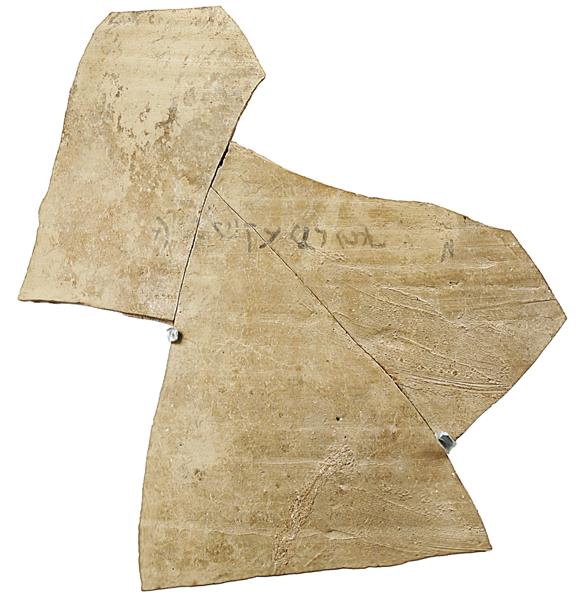
During the 1960s at Masada, in a room in the fortress wall, excavators discovered a small inscription that might relate to Ananias. Written across a potsherd, the inscription consists of five Aramaic words: H[nny]h khn’ rb’ ‘qby’ bryh, translated “H[anania]h the high priest, ‘Aqavia his son.” (The letters in brackets indicate possible readings by modern specialists.) Hananiah in Hebrew can be translated Ananias or Ananus (or Annas) in Greek. Extant ancient writings do not mention this son in relation to the high priest Ananias. Although the high priest Ananias is a candidate, two other high priests of the first century C.E., Ananus the Elder and the Younger, are also candidates, and we do not have enough information to know to which one the inscription refers.
There is also a reasonable potential that the high priest Jonathan, son of Ananus, son of Seth, might be confirmed, but that is not certain, so he is in the category “Almost Real.” Whether this name appears in Acts 4:6 is a matter of ancient manuscript evidence.
As for ancient historical evidence for Jesus’s apostles, so far as I can determine, only ancient texts written by Christians (of various early persuasions) clearly contain evidence that is conclusive. To make firm identifications, such evidence must meet the established criteria mentioned above, regarding authenticity of source(s), setting (time and place), and sufficient marks of identification to avoid confusing the person potentially to be identified with someone else. Ancient Christian texts about the apostles and others in the New Testament—such as Priscilla, who is mentioned in the Book of Acts and the letters of the apostle Paul—are beyond the scope of this study, but books on these texts continue to appear.
Finally, Theudas, who appears in Acts 5:36 in Gamaliel’s first example of a movement that ended abruptly when its leader was killed “some time ago,” cannot be identified with the Theudas of whom Josephus wrote, because it seems that two different men having this name lived at different times. Thus, for our purposes, this figure cannot be confirmed.
The number of confirmed figures from the New Testament now consists of at least seven religious figures (Jesus and the six above), plus 23 political figures—currently 30 in all. When added to the documented 53 real people in the Hebrew Bible, we arrive at a grand total of 83 real Bible people—for now.
In the pages of BAR, Lawrence Mykytiuk has demonstrated that archaeology and extra-biblical writings attest to the existence of 53 figures from the Hebrew Bible, Jesus, and 23 political figures from the New Testament. Now, find out how many New Testament religious figures can be identified from evidence beyond the Bible.
You have already read your free article for this month. Please join the BAS Library or become an All Access member of BAS to gain full access to this article and so much more.
Already a library member? Log in here.
Institution user? Log in with your IP address or Username
Footnotes
1. See Lawrence Mykytiuk, “Archaeology Confirms 50 Real People in the Bible,” BAR, March/April 2014; Lawrence Mykytiuk, “Did Jesus Exist? Searching for Evidence Beyond the Bible,” BAR, January/February 2015; Lawrence Mykytiuk, “Archaeology Confirms 3 More Bible People,” BAR, May/June 2017; Lawrence Mykytiuk, “New Testament Political Figures Confirmed,” BAR, September/October 2017.
2.
The Mishnah and the Gemara make up the Talmud, one of Judaism’s foundational collections of texts. The Mishnah was compiled in the second century C.E. by Rabbi Judah ha-Nasi (the Prince; c. 135–200 C.E.) on the basis of earlier collections.
3. See Győző Vörös, “Machaerus: Where Salome Danced and John the Baptist Was Beheaded,” BAR, September/October 2012; Győző Vörös, “Anastylosis at Machaerus,” BAR, January/February 2015; Győző Vörös, “Machaerus: A Palace-Fortress with Multiple Mikva’ot,” BAR, July/August 2017; Győző Vörös, “Restoring Herod’s Throne Niche at Machaerus,” BAR, Winter 2020.
4. See Mark Wilson, “James or Jacob in the Bible? Giving Jacob His Due,” Bible History Daily (blog), April 27, 2017.
5. See André Lemaire, “Burial Box of James the Brother of Jesus,” BAR, November/December 2002; Hershel Shanks, “‘Brother of Jesus’ Inscription Is Authentic!” BAR, July/August 2012.
6. Leen Ritmeyer and Kathleen Ritmeyer, “Akeldama: Potter’s Field or High Priest’s Tomb?” BAR, November/December 1994.
Endnotes
1.
Orlah 2.12a; Rosh ha-Shanah 2.5e; Yebamoth 16.7e, h; Sotah 9.15e, l; and Gittin 4.2b, e, 4.3c. Many other tractates refer to “Gamaliel,” but it is unclear to which Gamaliel they refer. Josephus, Life 38, refers to “Simon, the son of Gamaliel.” See also “Gamaliel I” and “Hillel,” in The Jewish Encyclopedia (1906), available online.
2.
The term “brother” can be translated to mean either a male sibling or a relative, especially a cousin. The latter can be used to support the teaching that Mary, the mother of Jesus, remained a perpetual virgin. The Christian teaching of the virginal conception of Jesus means that even if they were actual children of the same mother, they could be no closer than half-siblings. They might also have been children of Joseph by a previous marriage.
